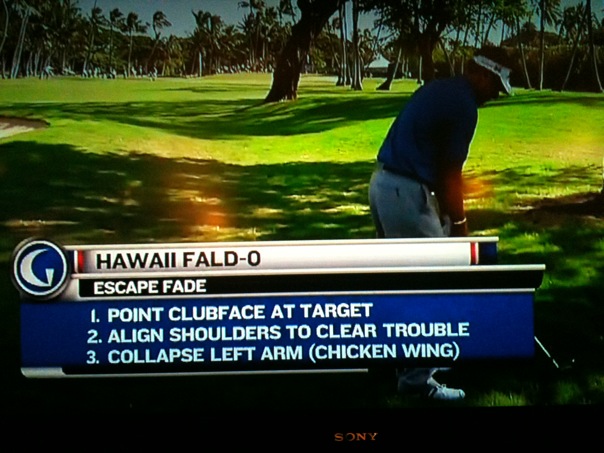Science and Golf
Posted January 21st, 2010 @ 08:25am by Erik J. Barzeski
For decades, the PGA manual of instruction said that a golf ball, when struck, started "on the line of the swing path and then curved back to where the clubface was pointed."
Common sense tells you this makes little sense: how could a ball rebound off a clubface anything but square? Sure, the ball is compressed against the clubface and is carried a brief distance by the "swing path," but so much so that it starts on that line?
Turns out your common sense was right. New science - within the past few years - has revealed that roughly 85% of what determines a golf ball's flight at impact is the clubface angle - where it's pointed right or left (similar rules apply vertically, but it's slightly different due to grooves and the effect of loft on the clubface) - and the rest is determined by the swing path. Where a ball curves to is still a result of the clubface's orientation relative to the swing path, but science tells us you can't simply point the clubface at the target, make any old swing, and have the ball go there.

What's astonishing is that touring pros - people who depend on information like this - have bought the lie for decades as well. In the image above a six-time major championship winner named Nick Faldo shows this: aim the clubface at the flag, ignore the tree in the way your swing path (determined by your shoulders) will make the ball go to the side of the tree.
FALDO-O is WRONG-O.
Given the science, what these pros say they do and what they actually do vary. A fade is a shot that curves left to right for a right-handed golfer. Assuming the tree is in line with the flagstick, Faldo is telling you to aim the clubface at the tree and swing slightly to the left. This - science tells us - will result in a ball that starts at the tree and, if it somehow gets through without touching anything, will curve right of the target.
What Nick Faldo must be doing is closing (pointing left) the clubface dynamically throughout his swing and swinging even further to the left to compensate: i.e. he's pointing the clubface where he says your shoulders should go to the left of the tree and swinging even further left than his original shoulder line.
That takes a tremendous amount of skill and an active subconscious mind.
The science on this is clear, and yet golfers and instructors cling to the old way as if every student they've ever had is going to ask for a refund if they say "oh, wait, we were wrong!"
Kudos to those who get it and believe the science, and shame on you those who don't.
One Response to "Science and Golf"

Posted 15 Sep 2010 at 11:22am #
I feel better knowing that common sense is still the way to go. I tried to make the ball go like was touted but would ultimately fail.
I have an unusual golf swing in that my hits normally go straight along the line in which I have the club face directed and it will not curve towards the direction of the wanted result.